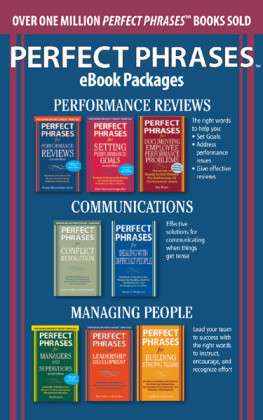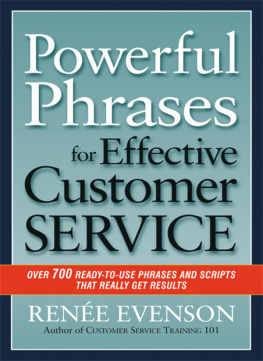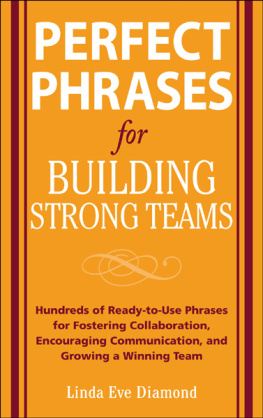
Copyright 2006 by The McGraw-Hill Companies, Inc. All rights reserved. Manufactured in the United States of America. Except as permitted under the United States Copyright Act of 1976, no part of this publication may be reproduced or distributed in any form or by any means, or stored in a database or retrieval system, without the prior written permission of the publisher.
ISBN: 978-0-07-170923-1
MHID: 0-07-170923-1
The material in this eBook also appears in the print version of this title: ISBN: 978-0-07-145406-3, MHID: 0-07-145406-3.
All trademarks are trademarks of their respective owners. Rather than put a trademark symbol after every occurrence of a trademarked name, we use names in an editorial fashion only, and to the benefit of the trademark owner, with no intention of infringement of the trademark. Where such designations appear in this book, they have been printed with initial caps.
McGraw-Hill eBooks are available at special quantity discounts to use as premiums and sales promotions, or for use in corporate training programs. To contact a representative please e-mail us at bulksales@mcgraw-hill.com.
TERMS OF USE
This is a copyrighted work and The McGraw-Hill Companies, Inc. (McGrawHill) and its licensors reserve all rights in and to the work. Use of this work is subject to these terms. Except as permitted under the Copyright Act of 1976 and the right to store and retrieve one copy of the work, you may not decompile, disassemble, reverse engineer, reproduce, modify, create derivative works based upon, transmit, distribute, disseminate, sell, publish or sublicense the work or any part of it without McGraw-Hills prior consent. You may use the work for your own noncommercial and personal use; any other use of the work is strictly prohibited. Your right to use the work may be terminated if you fail to comply with these terms.
THE WORK IS PROVIDED AS IS. McGRAW-HILL AND ITS LICENSORS MAKE NO GUARANTEES OR WARRANTIES AS TO THE ACCURACY, ADEQUACY OR COMPLETENESS OF OR RESULTS TO BE OBTAINED FROM USING THE WORK, INCLUDING ANY INFORMATION THAT CAN BE ACCESSED THROUGH THE WORK VIA HYPERLINK OR OTHERWISE, AND EXPRESSLY DISCLAIM ANY WARRANTY, EXPRESS OR IMPLIED, INCLUDING BUT NOT LIMITED TO IMPLIED WARRANTIES OF MERCHANTABILITY OR FITNESS FOR A PARTICULAR PURPOSE. McGraw-Hill and its licensors do not warrant or guarantee that the functions contained in the work will meet your requirements or that its operation will be uninterrupted or error free. Neither McGraw-Hill nor its licensors shall be liable to you or anyone else for any inaccuracy, error or omission, regardless of cause, in the work or for any damages resulting therefrom. McGraw-Hill has no responsibility for the content of any information accessed through the work. Under no circumstances shall McGraw-Hill and/or its licensors be liable for any indirect, incidental, special, punitive, consequential or similar damages that result from the use of or inability to use the work, even if any of them has been advised of the possibility of such damages. This limitation of liability shall apply to any claim or cause whatsoever whether such claim or cause arises in contract, tort or otherwise.
About the Author
Michael Betrus conducts seminars and workshops in career guidance and has written numerous career guides, including 101 Best Cover Letters and 101 Best Rsums. A sales director and hiring manager for a Fortune 250 company, he has spent much of his career coaching candidates and enjoying the successes of how they execute their job searches.
Part I
Cover Letter Basics
Introduction
I hear it all the time as both a hiring manager and a career coach: Cover letters? Rsums? That stuff is of the past. Now its all about e-mail, job postings, and networking. Ive interviewed hundreds of candidates for middle- and upper-level management for some giant firms, and this is what they tell me.
I interview candidates for six-figure jobs and some have absolutely horrendous rsums and cannot draft a well-written letter. I never understand it.
Now, some others do a great job on their letters and rsums. You know what? Simply because they have a well-written letter or rsum will get them recognized amidst a sea of responses that make Mad magazine (dating myself here) look like the Wall Street Journal. A great letter or rsum will get looked at just because it stands out.
My group has passed on some great candidates who have good pedigrees but such poorly written letters (e-mails, actually) or rsums that I cannot fathom them sending me a coherent weekly report.
Writing great letters and rsums is important because it is the first opportunity a recruiter or hiring manager gets to see an example of the work you can perform. If the rsum or letter has a typo or is not grammatically correct, thats not a great sign. I promise, I decline to meet with anyone that takes such little care.
This book will provide you with the best concept for cover letters, the consultative sales approach. This principle teaches you to spin your job search around the needs of the employer, not your skills or background. It will also provide you with many sample letters, letter formats, and guidelines, and thousands of phrases you can use when crafting that letter or e-mail to respond to an opportunity. Crafting a great letter or e-mail will get you noticed.
I have been involved in this type of work for years. In college, I wrote an article to help give my fellow college students at Michigan State University tips on getting hired when not pursuing the on-campus recruiting channel. As an accounting graduate, I had no more aptitude for getting published than anyone else. But even before I ever thought of writing that first book on rsums or cover letters, I did write effective cover letters and took a lot of time to spin my key messages around the needs of the employers.
Your attention to detail sends a message far beyond the words used in your response to a posting or a contact you are making through a colleague. Please pay attention to what you write! You will never know how many doors are closing because of imperfect writing; you just may not get the callbacks.
Formatting a Cover Letter and E-mail
I. Heading
To include name, address, phone number, fax number, e-mail, etc.
Patrick D. Dudash
1801 West Cortney Street
West Palm Beach, FL 33409
Phone: (561) 555-1234 / Fax: (561) 555-4321
Pdudash@xxx.com
The heading does not have to include all of the items listed here. Name, address, and telephone are critical, but fax number and e-mail address are optional. If you include your e-mail address, make sure you check it often. If you list a fax number, make sure you check it as well. And of all things, do not use your current employers fax or e-mail address unless you have their approval.
E-mail note: You do not need to use this heading if youre sending an e-mail. Place this information at the signature line on an e-mail.
II. Date
September 5, 2006
E-mail note:You do not need to type in the date, since it will be time stamped anyway.
III. Name, Title, Company Name, and Address of Recipient
Ms. Maria Lane, Executive Vice President
PGR Industries, Inc.
1011 Dame Kate
Nashville, TN 23244
The only critical thing here is to make sure you include the company name and the recipients title, if you know it.
E-mail note: Like the Heading, this is not required in an e-mail. However, in the Subject line in the e-mail, reference the specific position and recipients name (if known). If you are responding to a Marketing Manager position, type in Marketing Manager Candidate Dudash in the subject line, to make it easier for the recipient to open and file and forward.
Next page




